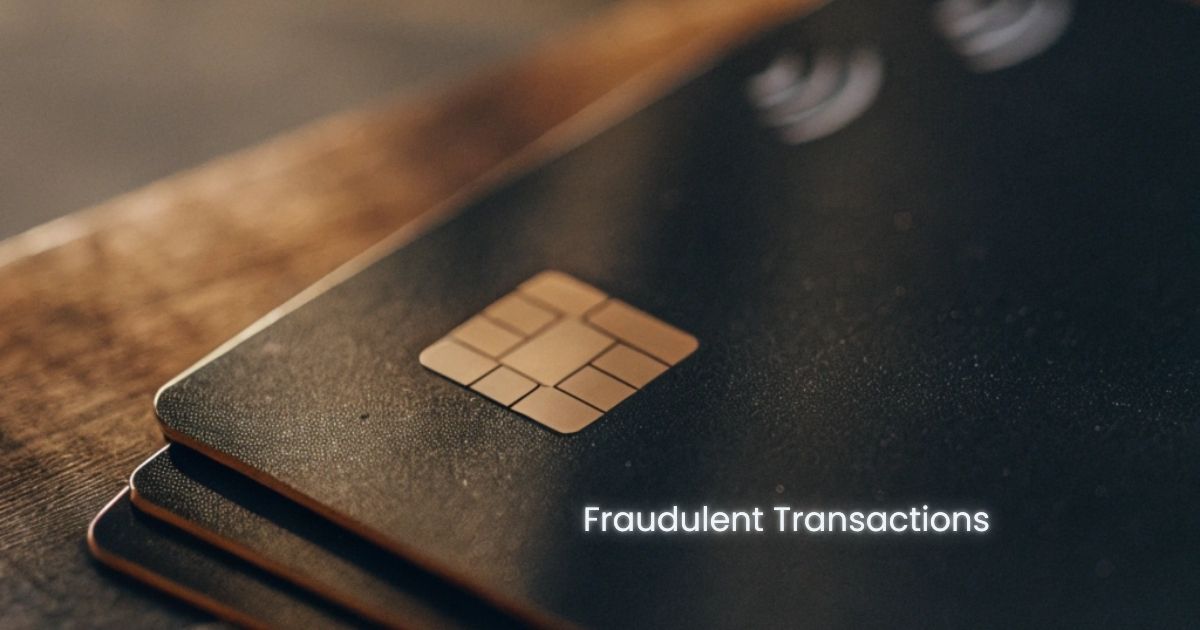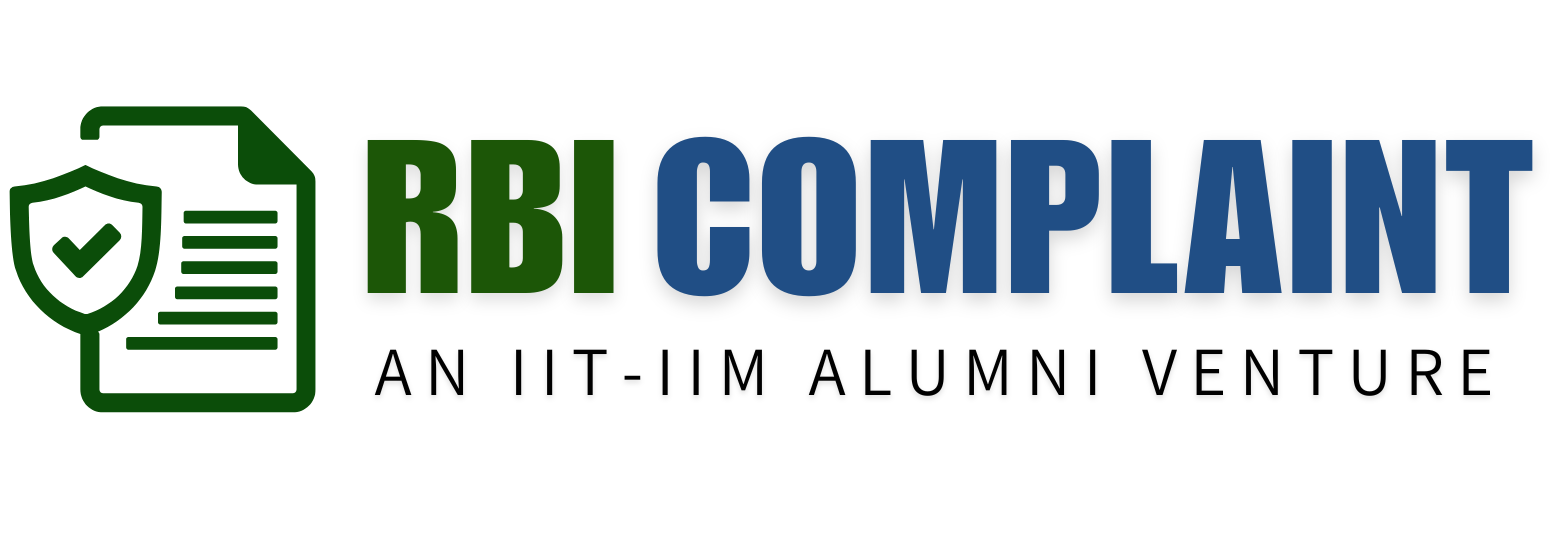· Cyber Security · 5 min read
How RBI Handles Complaints Related to Fraudulent Transactions
Learn how the Reserve Bank of India (RBI) addresses complaints about fraudulent transactions. Discover the complaint process, customer rights, refund rules, and more in this complete guide.

Ever gotten that dreaded notification: “A transaction of ₹10,000 was made from your account” but you didn’t do it? Yep, that’s the stuff of nightmares. With digital banking becoming the norm, fraudulent transactions have also been on the rise. Thankfully, the Reserve Bank of India (RBI) has your back. It’s not just the central bank; it’s the watchdog that ensures you’re not left in the lurch when fraud hits your account.
Let’s dive into how RBI handles complaints related to fraudulent transactions, step-by-step.
Understanding Fraudulent Transactions
What Qualifies as a Fraudulent Transaction?
A fraudulent transaction is any unauthorized transaction that occurs without the account holder’s consent or knowledge. This includes card cloning, phishing, SIM swapping, and cyberattacks on banking infrastructure.
Types of Banking Frauds
Phishing – Fake emails or messages that trick you into sharing sensitive info.
SIM Swap – Criminals duplicate your SIM and gain access to OTPs.
Skimming – Devices placed on ATMs or POS terminals to steal card data.
Unauthorized UPI transfers – Done through fake apps or social engineering.
RBI’s Role in Consumer Protection
Mandate of RBI
RBI isn’t just about repo rates and inflation control—it’s also about ensuring fair play in the banking sector. It mandates all banks and financial institutions to adhere to strict customer service norms and cyber hygiene standards.
Overview of Its Regulatory Powers
Under the Banking Regulation Act and RBI Act, the RBI holds the authority to penalize banks, issue guidelines, and introduce grievance redressal mechanisms to protect the rights of consumers.
The Ombudsman Scheme
Introduction to the Banking Ombudsman
The RBI introduced the Banking Ombudsman Scheme to make banking grievance redressal simple and cost-free. The ombudsman acts like a referee between you and the bank.
Historical Evolution of the Scheme
Launched in 1995, revamped in 2006, and merged under the Integrated Ombudsman Scheme 2021, this program now covers banks, NBFCs, and even payment system participants.
Key Functions of the Ombudsman
Redressal Process
Receives customer complaints against banks
Investigates and mediates
Passes a verdict which banks must follow (in most cases)
Jurisdiction and Scope
It covers issues like:
Unauthorized transactions
Delay in fund transfers
Non-issuance of refunds
Mis-selling of financial products
Complaint Filing Process
Step-by-Step Guide
Lodge a complaint with your bank first.
If unresolved after 30 days, head to RBI’s Complaint Management System (CMS).
Select your service provider (Bank, NBFC, PPI).
Fill out details, attach evidence, and submit.
Online vs. Offline Options
Online: CMS Portal
Offline: Write to the ombudsman in your jurisdiction with the required documents.
Time Frame for Filing Complaints
You have one year from the date of awareness of the fraud to file a complaint. Missed it? Tough luck—RBI might reject it unless you have solid reasoning.
Documents Required
Copy of complaint submitted to the bank
Response received (if any)
Identity proof
Transaction details
Screenshots or call recordings (if available)
Common Mistakes to Avoid
Not contacting your bank first
Missing attachments
Submitting incomplete forms
How RBI Investigates Complaints
Internal Mechanism
RBI coordinates with the concerned financial institution, collects logs, listens to call recordings, and goes through transaction history to analyze what went wrong.
Coordination with Banks
Banks are bound to cooperate. Failing to do so can lead to penalties and compliance audits by RBI.
Decision Making and Penalties
How Decisions Are Reached
After reviewing the evidence, the Ombudsman either:
Orders compensation
Dismisses the case
Recommends further inquiry
Penalties Imposed on Banks
RBI can impose monetary penalties or issue show-cause notices. In severe cases, it can even suspend services temporarily.
Customer Compensation
RBI Guidelines on Refund
If the fault lies with the bank or third-party breach, and you report within 3 working days, you are not liable for the loss. You get your money back within 10 working days.
Timeline for Compensation
Within 10 days: If complaint is valid
Up to 90 days: For complex cases
Role of Digital Platforms in Filing Complaints
Sachet Portal
This portal addresses complaints related to illegal deposit schemes and financial scams.
CMS (Complaint Management System)
User-friendly, quick, and integrated with all regulated entities—CMS is your go-to platform for filing online complaints.
Escalation of Unresolved Complaints
What If You’re Not Satisfied?
You can appeal to the Appellate Authority within RBI within 30 days of the Ombudsman’s decision.
Role of Lokpal in Banking
While Lokpal deals with broader governance issues, RBI’s Ombudsman focuses purely on financial service complaints.
Case Studies
Case 1: A senior citizen lost ₹80,000 to a phishing scam. RBI ordered the bank to refund the full amount within 10 days.
Case 2: UPI fraud case involving ₹12,500. The bank delayed the refund. Ombudsman penalized the bank ₹25,000 for negligence.
Prevention Tips from RBI
Never share OTPs or passwords—even with bank officials.
Use secure internet connections for online banking.
Install antivirus software.
Regularly check your account for suspicious activity.
Activate transaction alerts.
Conclusion
In today’s digital-first world, frauds might be getting smarter—but so is the RBI. With clear guidelines, consumer-centric mechanisms, and robust oversight, RBI ensures that victims of banking frauds aren’t left helpless. But remember, being alert is always your first line of defense.
FAQs
Q1: Can I file a complaint if the bank refuses to refund a fraudulent transaction?
Yes, you can escalate your complaint to the RBI through the CMS portal if your bank doesn’t resolve it within 30 days.
Q2: What is the timeline for resolution after filing a complaint with the RBI?
Generally, you can expect resolution within 30 to 90 days, depending on the complexity of the case.
Q3: Is there any fee for filing a complaint with RBI?
Nope. Filing a complaint with the Banking Ombudsman is 100% free.
Q4: What happens if I gave my OTP willingly?
Unfortunately, in such cases, the liability may fall on you. Always exercise caution when sharing credentials.
Q5: Can I still file a complaint if I don’t have internet access?
Absolutely. You can write a physical letter to your nearest Ombudsman office or even visit in person.



 - How It Works..Dl13hZu7.jpeg)